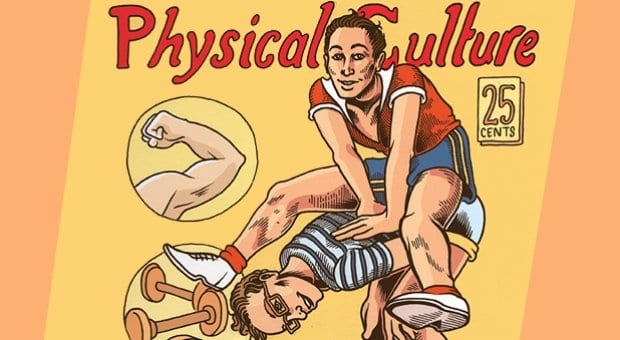Imagine the following in a crazy, nostalgic-grandpa-style narration:
The year is 1937. Come the end of January the worst years of the Great Depression are over. A baby who will eventually become Dame Shirley Bassey isn’t yet a month old. Film producer, hotel magnate and future recluse Howard Hughes has established a world record by flying from Los Angeles to New York City in less than seven and a half hours. A writer named Donald Furthman Wickets has published an article in the fitness magazine Physical Culture titled “Can Sex in Humans Be Changed?”
When I stumbled on Wickets’s article, I was astounded at the forward-thinking, highly quotable, well-researched and way-ahead-of-its-time discussions about chromosomal, hormonal and social sexual development. Wickets invokes sexologist Magnus Hirschfeld, sociologist Havelock Ellis and select ancient mythology. “When I speak of a person’s sex,” Wickets explains, “I refer to his or her preponderant sex. Sex is relative. No man is 100 per cent male, no woman 100 per cent female. Every male, even the lustiest, retains certain rudimentary characteristics of the other sex.” In essence, Wickets is discussing mid-20th-century proto-gender theory!
He begins his article with two case studies: Mark Weston was born Mary Edith Louise, who became one of England’s best women shot-putters. While the start of Weston’s transition isn’t described, after undergoing two surgeries at Charing Cross Hospital, he was legally designated a man and soon after married “a normal young woman” — his close friend Alberta Bray.
Weston’s contemporary Zdenek Koubkov was a Czechoslovakian corset fitter turned superstar runner. “However, in 1935, while he was wearing his running togs, suspicion as to his true sex arose,” Wickets wrote. “An investigation ensued.” Most certainly intersex, Koubkov underwent surgery to “emphasize [his] masculinity” and was reclassified as male by the Czech government.
Wickets himself was actually George Sylvester Viereck, a German-born American writer, poet and journalist. Viereck apparently wrote under a number of different pseudonyms, even in Physical Culture. Although some of his writing was fairly liberal, he leaned much harder on his fascist beliefs and, most controversially, was a Nazi sympathizer. Only a year after “Can Sex in Humans Be Changed?” Viereck would interview Adolf Hitler. After the Second World War, he was convicted for failing to register with the US Department of State as a Nazi agent and spent five years in jail. His memoirs about that period of his life, Men into Beasts (1952), brutally depicted the male rape and situational homosexuality that he witnessed during his sentence and was one of the first gay pulp novels, despite being autobiographical.
Disappointingly, but perhaps not surprisingly, “Can Sex in Humans Be Changed?” ends on a rather black-and-white note. Notwithstanding his nuanced argument, Viereck concludes that, despite advances in hormonal and surgical treatments, “the endocrinologist can enhance the male or the female characteristics of the pseudo-hermaphrodite; the plastic surgeon can eradicate some malformations. But complete transformation of sex is not accomplished even in animals.”
In the annals of trans history, the glamorous and beautiful Christine Jorgensen is often called “the first transsexual.” Jorgensen became a media sensation in 1952 following the release of a New York Times article titled “Ex-GI Becomes Blonde Beauty.” In a television interview, Jorgensen named the aforementioned Dr Hirschfeld as having performed the first incarnations of sex-reassignment surgery. Even she acknowledges that she’s not the first and that there was a “first transsexual,” though we know there have been gender-variant people since long before the advent of medicine and surgery.
Hirschfeld, Jorgensen and even Viereck each have a complicated place in history as pioneers, forwarding and hindering an emergent trans community simultaneously. Our understanding of sex and sexuality grew out of the medicalization of these identities. This means that we’ve historically assumed that being transsexual or transgender is solely a pathological medical condition and that a person is trans only after undergoing surgery or hormone treatment. We have a fixation on (often intensely invasive) correction. Viereck should have just taken his own advice: “since no human being equals any other human being, since every thumb-print differs, however minutely, from every other thumb-print, we may assume that, theoretically, the sexual behavior and the sexual constitution of every human being differs in some manner from that of every other human being.”
This kind of humanist approach is much more productive, making room for those who don’t fit into a narrow idea, be it in 1937 or 2013.


 Why you can trust Xtra
Why you can trust Xtra


